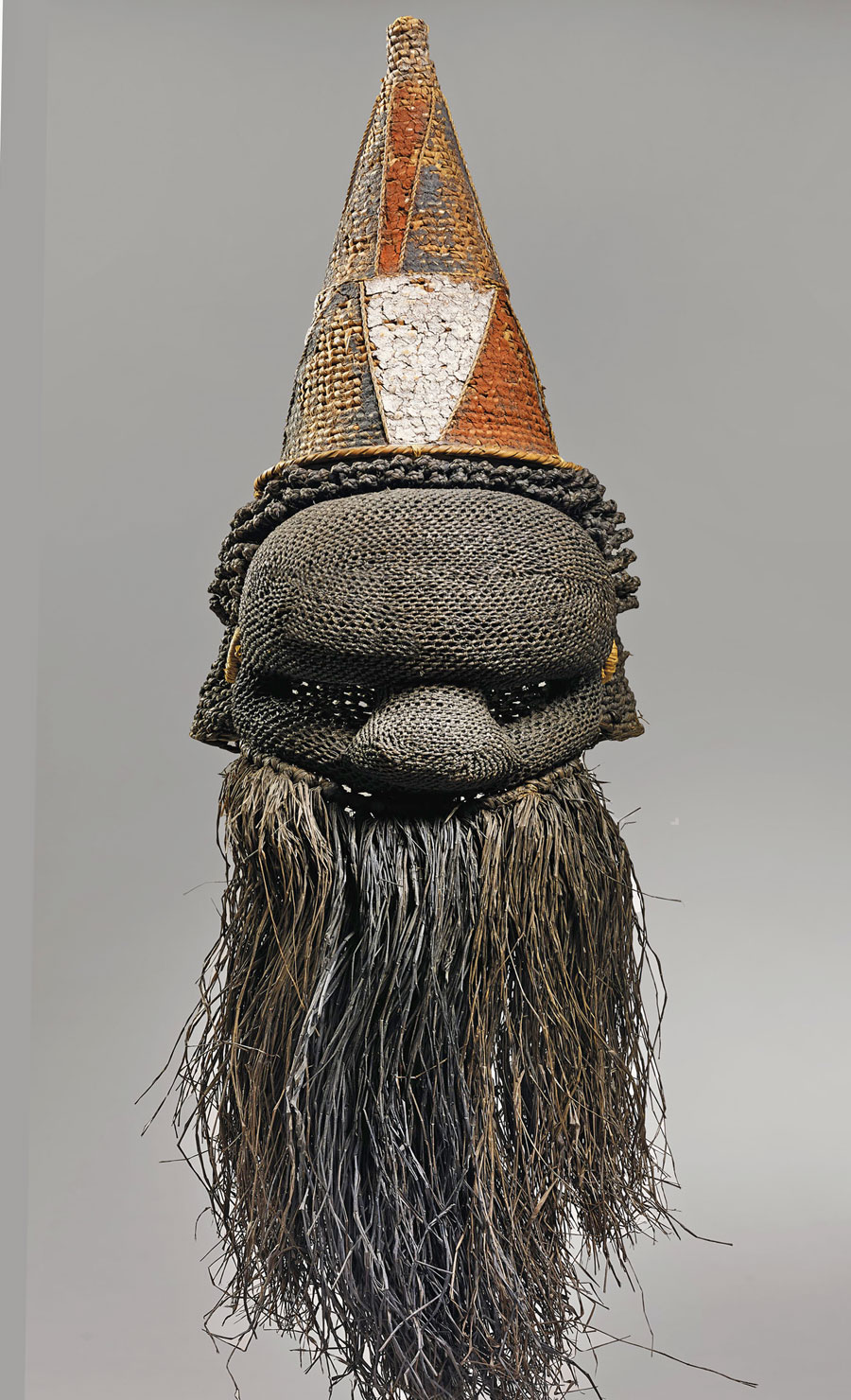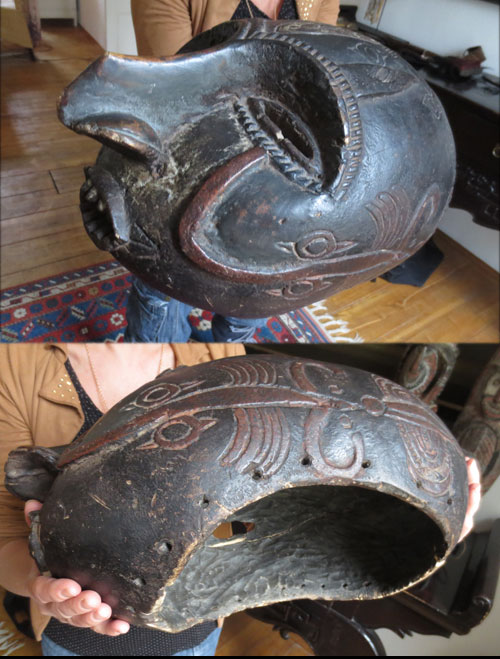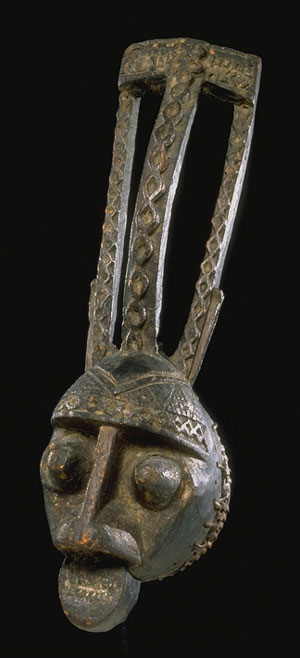 The 60,000 Salampasu people live east of the Kasai River, on the frontier between the Democratic Republic of the Congo and Angola. Their name is said to mean “hunters of locusts”, but they were widely viewed with terror by adjacent groups. They maintain strong commercial and cultural relations with their southern neighbors, the Chokwe and the Lunda, to whom they pay tribute.
The 60,000 Salampasu people live east of the Kasai River, on the frontier between the Democratic Republic of the Congo and Angola. Their name is said to mean “hunters of locusts”, but they were widely viewed with terror by adjacent groups. They maintain strong commercial and cultural relations with their southern neighbors, the Chokwe and the Lunda, to whom they pay tribute.
The Salampasu are homogeneous people governed by territorial chiefs, who supervise village chiefs. Their hierarchical power structure is counterbalanced by a warriors’ society. A people with a reputation as fearless warriors, the Salampasu have retained the custom of a rough and primitive life. Warring and hunting are privileged occupations, but the women do some farming.
Famous Salampasu masks made for initiation purposes are characterized by a bulging forehead, slanted eyes, a triangular nose and a rectangular mouth displaying intimidating set of teeth. The masks made of plaited raffia fiber are used by the Idangani association. Possessing many masks indicated not only wealth but also knowledge. The costume, composed of animal skins, feathers, and fibers, is as important as the mask itself. It has been sacralized, and the spirit dwells within it. Masks are still being danced as part of male circumcision ceremonies. www.zyama.com B+





